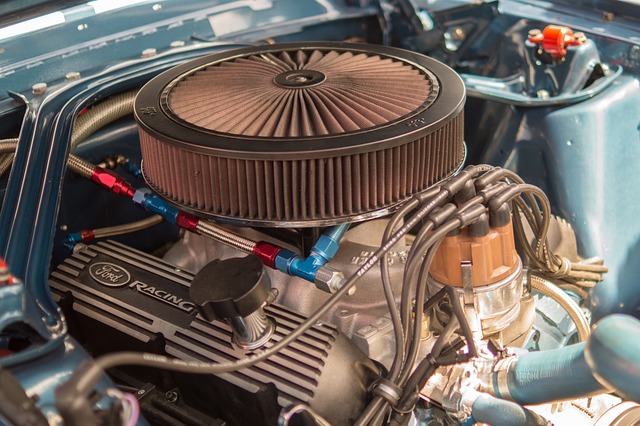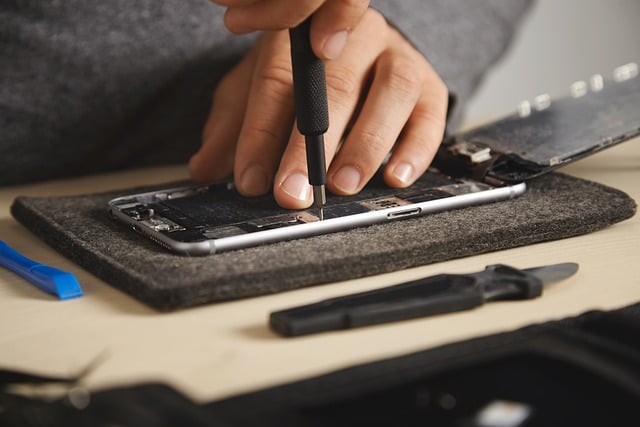Window replacement is a fundamental aspect of effective home repair and maintenance, enhancing both energy efficiency and the visual appeal of your home. As windows age, they can lead to drafts, condensation, and higher energy costs due to reduced insulation effectiveness. Upgrading to modern, energy-efficient windows not only improves comfort and reduces heating and cooling bills but also offers noise reduction benefits, contributing to a more peaceful living environment. These windows protect against water damage and structural issues, preserving your home's value and integrity over time. Regular maintenance is crucial for maintaining window performance, including consistent cleaning, inspecting seals, lubricating moving parts, and tightening hardware. This proactive approach ensures the longevity of your windows and supports efficient home repair and maintenance practices. By investing in quality window installations and committed upkeep, homeowners can achieve significant energy savings, long-term economic benefits, and a more comfortable home environment.
Homeowners seeking to enhance their living spaces, improve energy efficiency, and ensure the longevity of their homes will find in-depth guidance on window replacement and installation. This article delves into the pivotal role of windows in home repair and maintenance, offering a comprehensive overview from recognizing the need for change to mastering post-installation care. Learn about the various types of windows suitable for your abode, understand the energy efficiency benefits that new windows can offer, and navigate the installation process with ease.
- Understanding the Necessity of Window Replacement in Home Repair and Maintenance
- Assessing Your Windows: Signs It's Time for a Change
- Types of Windows: Finding the Right Fit for Your Home
- The Installation Process: A Step-by-Step Guide to Window Replacement
- Energy Efficiency Gains: How New Windows Can Reduce Your Utility Bills
- Maintaining Your Windows Post-Installation: Tips for Long-Term Performance and Longevity
Understanding the Necessity of Window Replacement in Home Repair and Maintenance

When considering home repair and maintenance, window replacement emerges as a critical aspect to enhance energy efficiency and aesthetic appeal. Over time, windows can suffer from wear and tear, leading to drafts, condensation between panes, and difficulty in operation. These issues not only affect the comfort of your home but also contribute to increased energy costs due to less efficient insulation properties. Replacing old or damaged windows with modern, energy-efficient models is a strategic investment that can significantly reduce heating and cooling expenses over time. Furthermore, advanced glazing technologies and improved frame materials offer better thermal performance and noise reduction, which can make your home more comfortable and peaceful. Properly maintained and strategically replaced windows also protect against water damage and structural decay in the long run, ensuring that they remain a functional part of your home’s envelope. Incorporating this step into regular home repair and maintenance schedules not only prolongs the life of the windows but also safeguards the integrity and value of your property. It is a proactive measure that can prevent more extensive and costly repairs in the future, making it a prudent part of home stewardship.
Assessing Your Windows: Signs It's Time for a Change

When considering home repair and maintenance, assessing your windows is a crucial step in maintaining your home’s energy efficiency and structural integrity. Over time, windows can become drafty, foggy, or difficult to operate, which may indicate it’s time for a change. Signs of wear and tear, such as rot, decay, or condensation between the glass panes, are not just aesthetic concerns; they can significantly impact your home’s energy performance. If you notice these issues, it might be wise to explore window replacement options that offer better insulation and noise reduction properties. Additionally, if your windows require frequent repairs or have become a frequent source of leaks during rainstorms, the cost and effort of continuous maintenance may outweigh the benefits of keeping the old windows. It’s advisable to evaluate the overall functionality and durability of your windows. Energy-efficient models can enhance comfort by providing consistent temperatures throughout your home and may lead to savings on heating and cooling costs. By taking a proactive approach to window assessment as part of your regular home repair and maintenance schedule, you can ensure that your home remains a safe and comfortable living space.
Types of Windows: Finding the Right Fit for Your Home

When considering home repair and maintenance, window replacement is a significant decision that can enhance energy efficiency, aesthetics, and functionality. The variety of window types available ensures there’s an ideal fit for every homeowner’s needs. From single-hung and double-hung windows, where only the bottom or both sashes move, to casement windows that crank open for a clear view and ventilation, each style offers distinct benefits. Awning windows hinge at the top and tilt outward, allowing for ample light and airflow while keeping rain at bay. Bay and bow windows extend from the home, creating a unique architectural feature that maximizes natural light and provides expanded views. Sliding windows glide open with ease, making them a practical choice for high-traffic areas or where space is at a premium. Understanding the climate, the home’s architecture, and personal preferences are key factors in selecting the most suitable type of window for home repair and maintenance purposes. Double-pane or triple-pane glass options can further enhance energy efficiency and soundproofing, making the choice not only about style but also about sustainability and comfort. Proper installation is crucial to ensure longevity and performance, often requiring professional expertise. Homeowners should weigh their options carefully, considering factors such as maintenance requirements, durability, and cost, all of which contribute to a well-maintained and comfortable home environment.
The Installation Process: A Step-by-Step Guide to Window Replacement

When embarking on window replacement as part of home repair and maintenance, understanding the installation process is crucial for ensuring a seamless transition to improved energy efficiency and aesthetics. The process begins with selecting the appropriate windows that complement your home’s design and meet your functional needs. Once you have chosen the right models, the installation can proceed in several key steps.
Firstly, the existing windows are carefully removed, which involves careful handling of both the frames and any surrounding areas to prevent damage. This step is typically done by a skilled professional to minimize disruption to your home’s structure. After the old windows are safely taken out, any necessary repairs or modifications to the window openings are carried out to ensure proper fit and operation of the new windows.
Next, the newly purchased windows are prepared for installation. They are checked for any damage incurred during transport and verified for proper function. Installation then commences with the application of weatherproofing materials around the frame to prevent moisture intrusion and enhance thermal performance. The windows are positioned into the opening, and their alignment is meticulously adjusted for optimal operation and seal. Once securely installed, the final step involves sealing the windows and any trim work to complete the job.
Throughout this process, it’s essential to work with experienced professionals who adhere to industry standards and best practices for home repair and maintenance. This ensures that your window replacement project not only enhances your home’s value and comfort but also stands up to the elements and the test of time.
Energy Efficiency Gains: How New Windows Can Reduce Your Utility Bills

Upgrading to energy-efficient windows is a strategic move within home repair and maintenance that can significantly impact your utility bills. These modern windows are engineered with advanced materials and designs that enhance thermal performance, meaning they keep your home’s interior at a comfortable temperature with less reliance on heating and cooling systems. As a result, during the colder months, less heat escapes from your home, and during the warmer seasons, less cool air dissipates. This improved energy efficiency not only reduces your carbon footprint but also cuts down on energy costs, leading to noticeable savings over time. Homeowners who invest in high-quality window installations often recoup their investment through these ongoing utility bill reductions. Moreover, the longevity and low maintenance requirements of contemporary windows further contribute to long-term savings, as they rarely require costly repairs or replacements. By integrating these energy-saving windows into your home repair and maintenance plan, you’re making a proactive choice that yields both immediate and enduring benefits for your household’s comfort and finances.
Maintaining Your Windows Post-Installation: Tips for Long-Term Performance and Longevity

Regular upkeep of your windows after installation is pivotal for their long-term performance and longevity. To maintain your windows effectively, begin with a thorough cleaning routine that involves both the interior and exterior surfaces. This not only enhances visibility but also prevents the accumulation of debris that could lead to wear and tear. Use non-abrasive cleaners to avoid scratching the glass or finishing. Additionally, inspect the window seals regularly for any signs of deterioration or damage, as these seals are critical in maintaining energy efficiency and preventing moisture intrusion.
For homeowners seeking long-term durability, it’s advisable to lubricate moving parts with a silicone-based spray annually. This maintenance task ensures smooth operation and prevents the windows from sticking or becoming difficult to open over time. Regularly checking the hardware, including locks, handles, and hinges, is also essential. Tighten any loose components to prevent operational issues and ensure security. Lastly, keep an eye on the window frames for any warping or swelling, which can compromise the seal and reduce energy efficiency. Addressing these issues promptly with home repair and maintenance practices will safeguard your investment and maintain the aesthetic appeal of your home’s windows.
homeowners contemplating window replacement as a part of their home repair and maintenance efforts can confidently proceed with informed decisions. By evaluating their current windows for telltale signs of aging, understanding the various types available to suit diverse architectural styles, and familiarizing themselves with the installation process, individuals can ensure a seamless transition to more energy-efficient options. The benefits of this upgrade extend well beyond aesthetic improvements; homeowners may notice a significant decrease in their utility bills due to enhanced thermal performance. Proper maintenance post-installation further guarantees longevity and optimal functionality of the new windows, solidifying their investment in the comfort and efficiency of their living space.
